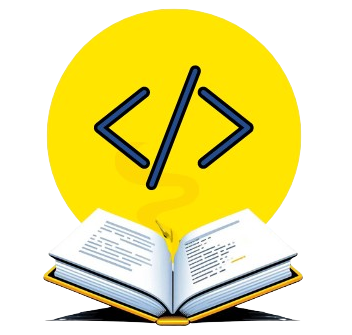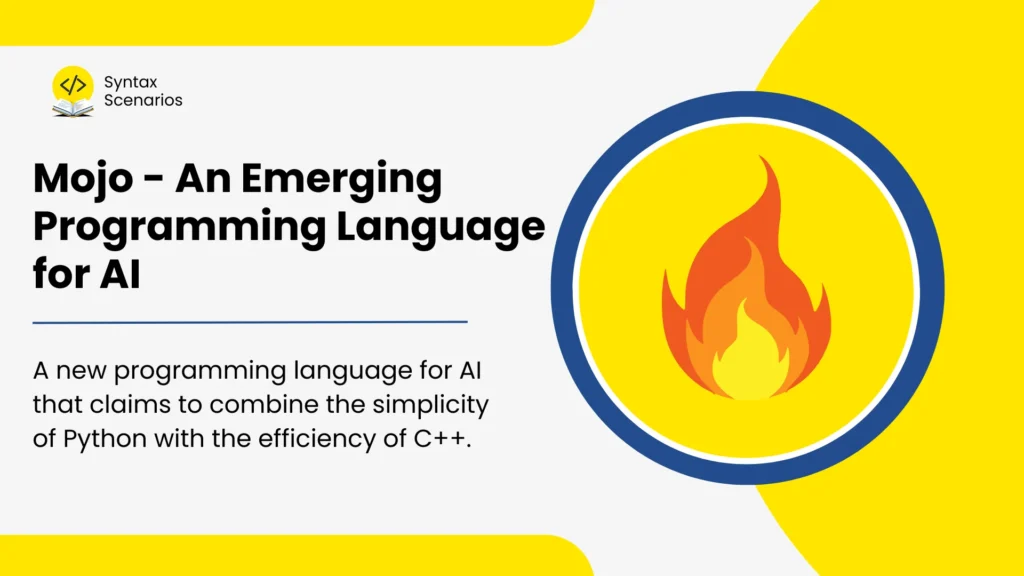Explore the new Mojo programming language that claims to combine the simple approach from Python with the power of C++. See what it has to offer including its performance, key features, working with AI, and whether it could be the next big programming language for AI.
The Rise of Mojo Programming Language
Mojo is a new emerging programming language that has developers’ eyes on it in the AI and software development world. Founded by Modular Inc., the Mojo programming language combines Python’s easy-to-use approach with the performance of some old languages like C/C++. What sets Mojo apart is its focus on performance with minimalism, but more on how it achieves this later in the article.
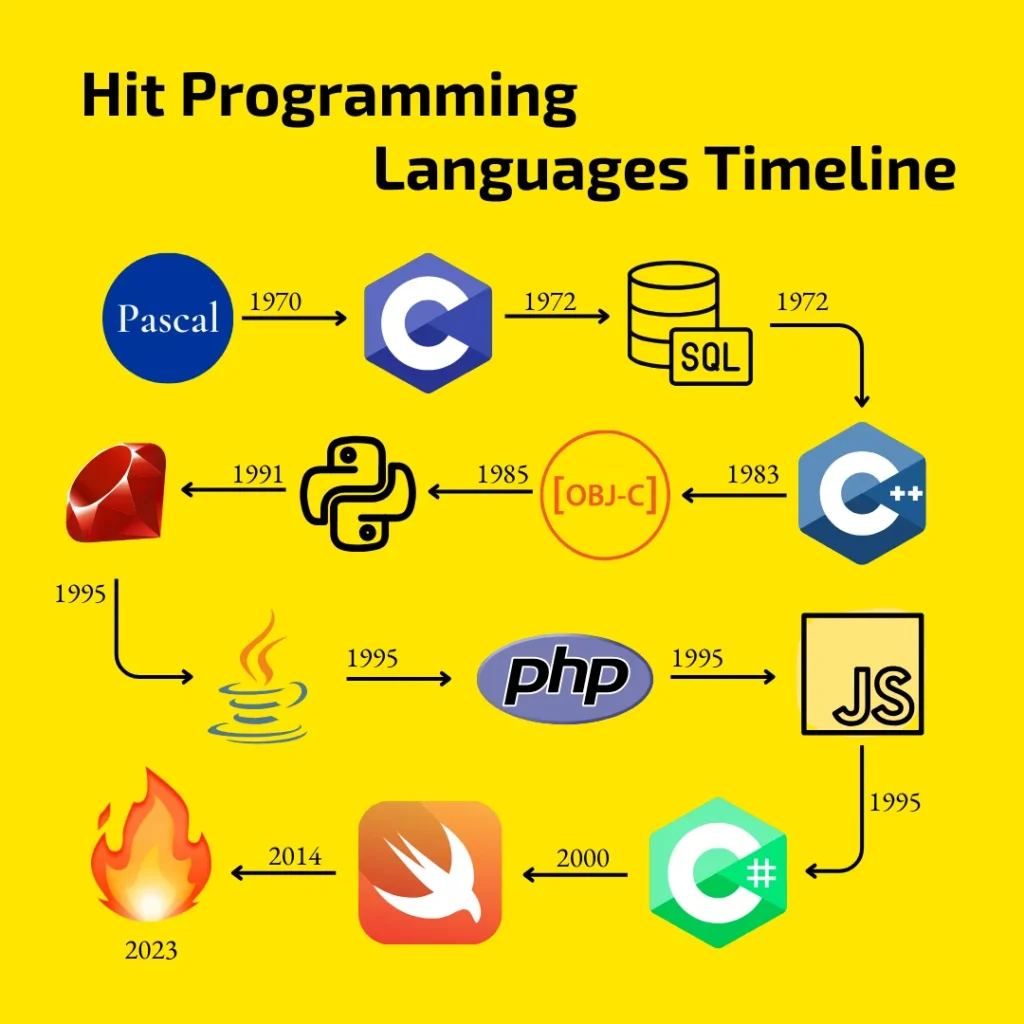
What is Mojo Programming Language?
Mojo is a new programming language released on May 2nd, 2023 is claims to transform how AI and general programming are done. The Language is Designed as a superset of Python keeping the simple syntax and readability of Python but Python is known for not performing well like low-level languages when it comes to tasks with higher processing power such as in AI development and hardware boosting. Then there are older languages like C/C++ that have the raw power but lack the readability and simplicity. That is where Mojo jumps in combining the raw power from C/C++ and the simple approach from Python to evolve how programming works or used to work.
Why is it Called Mojo?
The name “Mojo” means magic and charm, which fits well for a language that boosts Python’s power. Mojo is about adding new abilities to Python, making it more capable and efficient. Mojo was created to work well with accelerators and systems used in areas like artificial intelligence. These systems often need more than what regular programming can do. By choosing a name that suggests magic, the creators wanted to show that Mojo can make Python perform in amazing, almost magical ways.
What is Magic?
Magic, in the context of Mojo, is a virtual environment and package manager that supports a variety of programming languages including Python and Mojo. It is based on the conda/PyPI ecosystems and provides access to thousands of packages for Python, as well as other languages. Magic includes support for MAX, Mojo, and other environments. This gives developers more flexibility and options when working with these environments.
Key Features of Mojo Programming Language: What Makes Mojo Stand Out?
Combining Python Usability with High-Performance
Mojo was designed to be as simple as Python and has the power of languages like C++ allowing the developers to write code quickly, efficiently, and without getting stuck by complex programming rules along with that it competes with statically typed languages such as CUDA, C, and C++ making it the best option for developers to increase speed and performance for heavy tasks such as AI.
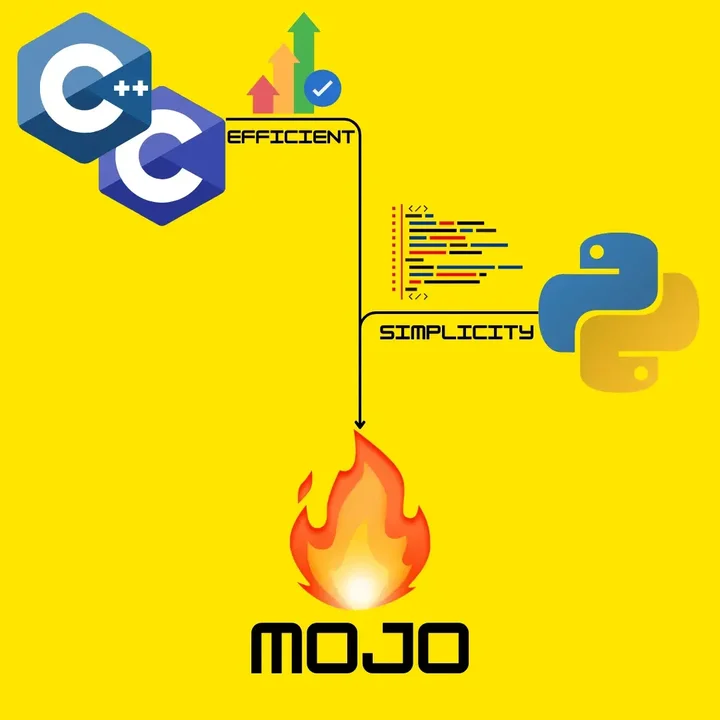
Support for Accelerators (GPUs and ASICs)
One of Mojo’s standout features is its ability to support advanced hardware, such as GPUs and ASICs, which are often required for AI and machine learning applications. These accelerators help process large amounts of data quickly, and Mojo is designed to tap into this power, making it an ideal language for AI developers who need high performance for training models and running complex algorithms.
Interoperability with the Python Ecosystem
Mojo integrates seamlessly with the Large Python ecosystem, allowing developers to use popular libraries like NumPy and Matplotlib in their projects. This means that developers don’t need to abandon the Python tools they know and love; they can simply extend their capabilities using Mojo’s enhanced performance features. This interoperability makes Mojo a practical choice for AI and data science projects that rely on Python libraries for tasks like data manipulation and visualization.
Just-In-Time and Ahead-of-Time Compilation
To further boost efficiency, Mojo uses a combination of Just-In-Time (JIT) and Ahead-of-Time (AOT) compilation techniques. JIT compilation allows code to be optimized while it’s running, making it faster. Meanwhile, AOT compilation pre-compiles code before execution, reducing runtime delays. These advanced compilation methods contribute to Mojo’s ability to perform up to 68,000 times faster than Python in some cases, offering developers the best of both worlds—dynamic flexibility and high-speed execution.
Why Mojo is a Game-Changer for AI Developers?
Unlocking Python’s Performance Limitations
Python has been a go-to language for AI development, but it struggles with performance when handling heavy computations or processing vast amounts of data. Mojo tackles this issue by offering the same ease of use and familiar syntax as Python but boosting it with the speed of languages like C++ and CUDA. This means developers can enjoy Python’s simplicity without compromising on performance, especially in critical AI tasks where speed is essential.
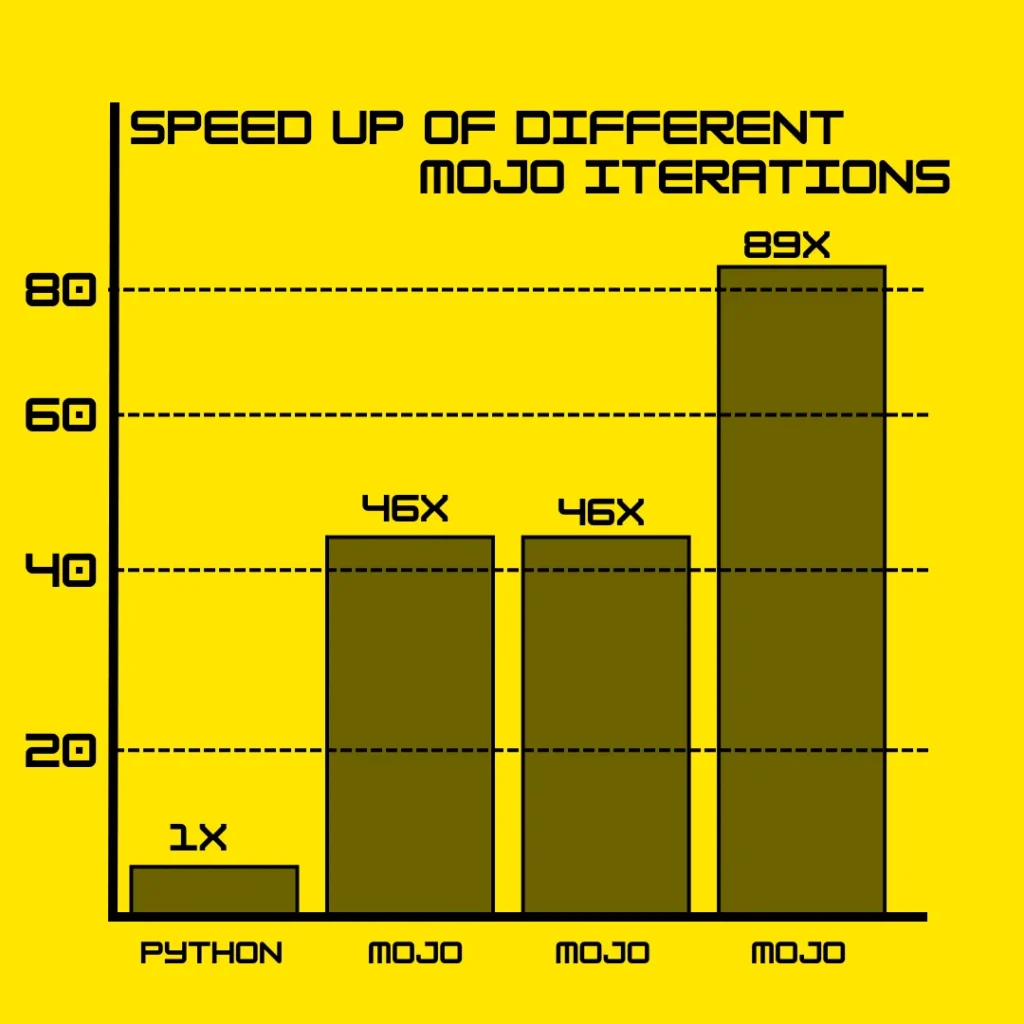
One Language for All Tasks
One of Mojo’s key advantages is its versatility. Instead of juggling multiple languages—using Python for AI development, C++ for performance-heavy tasks, and CUDA for hardware acceleration—Mojo allows developers to handle all of this in one language. This unified approach simplifies development, reduces complexity, and makes it easier to maintain code, as developers no longer need to switch between different programming environments for different parts of their projects.
Integration with AI Frameworks
Mojo’s seamless compatibility with popular AI frameworks like TensorFlow, PyTorch, and Scikit-learn further strengthens its appeal. Developers can continue using these familiar tools to build, train, and deploy AI models while benefiting from Mojo’s enhanced performance. This integration ensures that AI developers don’t have to sacrifice the tools they trust.
Mojo vs Other Programming Languages

Mojo vs Python
Python is popular for AI because of its simple syntax and extensive libraries, but it struggles with performance, especially for heavy computations. Mojo solves this by combining Python’s ease of use with optimizations that make it up to 68,000 times faster in some cases. This makes Mojo an excellent alternative for developers who need Python’s simplicity with far better performance for demanding AI tasks.
Mojo vs C++
C++ is known for its high performance but can be difficult to learn and use due to its complex syntax. Mojo offers similar computational power with a much simpler, Python-like syntax. This makes Mojo a more approachable choice for developers needing C++-level performance without the steep learning curve.
Mojo vs Java
Java is flexible and scalable, but in AI, Mojo stands out. Mojo is designed for AI-specific tasks and integrates easily with hardware accelerators like GPUs and ASICs. While Java is reliable for general programming, Mojo’s focus on performance and ease of use makes it better suited for high-performance AI applications.
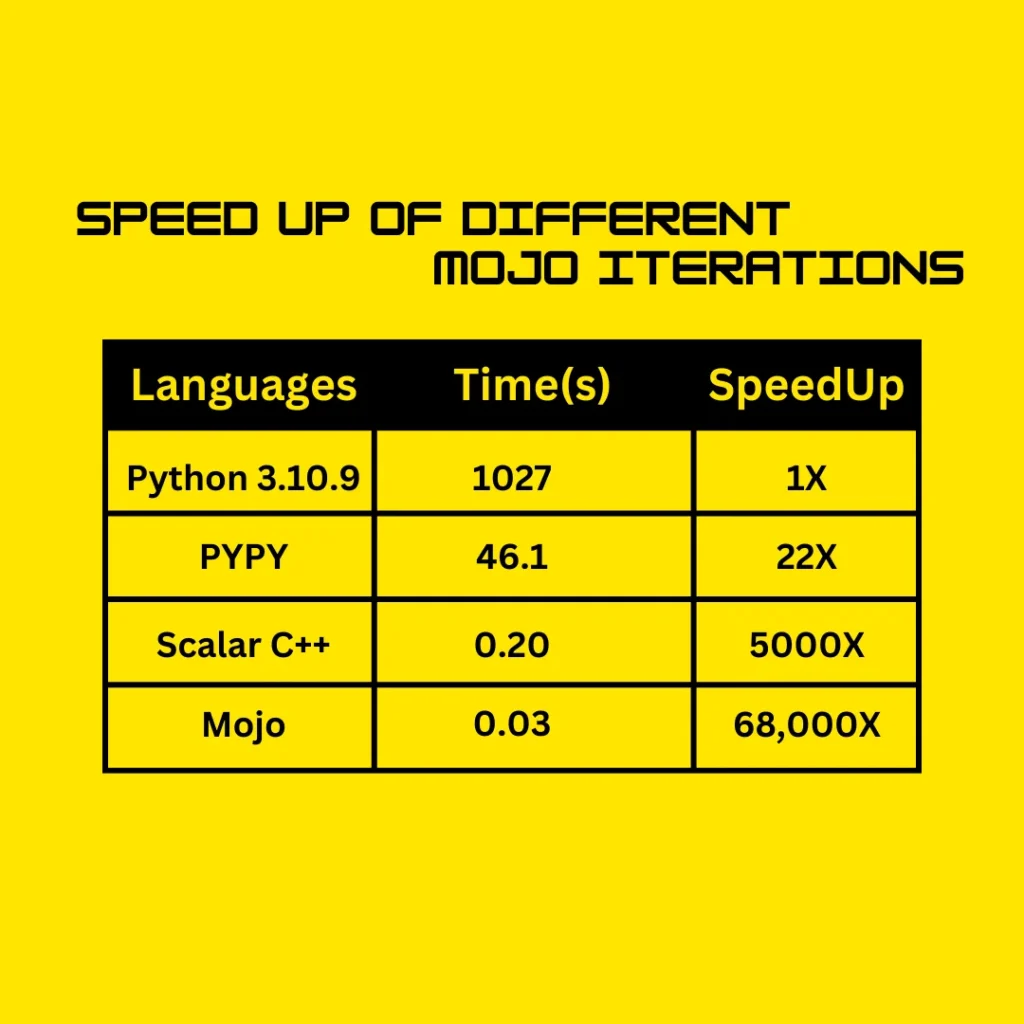
Applications of Mojo Programming Language in AI
Natural Language Processing (NLP)
Mojo is a great choice for natural language processing tasks like sentiment analysis, translation, and language generation. Its ability to leverage hardware accelerators, such as GPUs, makes it ideal for handling large datasets and performing complex computations quickly. Since NLP often involves processing vast amounts of text data, Mojo’s speed improvements over Python can lead to faster model training and more efficient inference, making it a great choice for text-based AI applications.
Computer Vision
In computer vision tasks, such as object detection, image classification, and facial recognition, performance is key. Mojo’s optimizations help handle the high computational demands of these tasks. With support for accelerators like GPUs and easy integration with AI libraries, developers can use Mojo to boost the performance of vision-based AI applications. This means faster processing of image data and more accurate real-time analysis, which is critical in fields like security, healthcare, and autonomous systems.
Reinforcement Learning
Reinforcement learning (RL) models, especially in complex simulations and training environments, require great computing power. Mojo’s high performance allows developers to run more iterations and simulations in less time, speeding up the training process. With its ability to handle demanding computations efficiently, Mojo is an excellent choice for RL applications, where the goal is to find optimal solutions through trial and error in dynamic environments.
IDEs and Tools for Mojo Development
Supported IDEs
Developers working with Mojo can use popular Integrated Development Environments (IDEs) like Visual Studio Code and PyCharm. These IDEs offer useful features like syntax highlighting, code completion, and debugging support, which make coding in Mojo more efficient. Since Mojo’s syntax is similar to Python, these tools make it easy for developers familiar with Python to transition smoothly into Mojo.
Mojo Playground
For those looking to quickly experiment with Mojo, there’s the Mojo Playground, a browser-based platform designed for rapid prototyping. It’s an ideal tool for trying out new ideas without needing to set up a full development environment. You can write and execute Mojo code directly in the browser, which makes it convenient for testing features or learning the language. The Playground simplifies the process of getting started with Mojo, making it accessible for beginners and experienced developers alike.
Challenges and Considerations with Mojo Programming Language
Proprietary Nature
One of the challenges with Mojo is that it’s a proprietary language, meaning it is owned and controlled by Modular Inc. This can raise concerns among developers who prefer open-source tools, as they may worry about access to future updates, support, and long-term viability. Since proprietary languages limit community-driven contributions and changes, some developers might hesitate to fully adopt Mojo until there’s more clarity about its availability and licensing structure. The control held by Modular Inc. could slow down the adoption of Mojo in open-source projects, which are a big part of the programming world today.
Growing Ecosystem
Mojo is still relatively new, and its ecosystem is in the early stages of development. While it shows great promise, the number of available libraries, community support, and educational resources is still growing. At present, Mojo doesn’t have the same extensive libraries and frameworks as Python, but this is expected to change as more developers start using it and contributing to the language. Over time, as the community expands and more learning resources become available, Mojo’s ecosystem will likely become more robust, providing better support for new developers and larger projects
The Future of Mojo – Will It Replace Python?
Mojo has generated excitement in AI programming with its powerful performance and Python-like simplicity. While it shows great potential, the question of whether it will replace Python remains uncertain. Mojo’s speed, sometimes up to 68,000 times faster, makes it a strong option for AI tasks that need heavy computation.
However, Python’s large ecosystem, community, and library support are significant barriers. Python has been a dominant language in AI, data science, and machine learning for years, and Mojo, though promising, is still growing. To compete with Python, it needs to build a large community and develop more resources.
In the future, Mojo could become a mainstream language for performance-critical tasks, complementing Python rather than replacing it.
Getting Started with Mojo Programming Language
To start coding in Mojo, you need to install it in your system using our step-by-step guide on Mojo installation. The guide covers the installation for different Operating Systems including Windows, Linux, and Mac. Our guide is the most updated one, and each and every step is tested before we’ve written the blog.
Also, we have a Mojo tutorial series that covers different coding topics on Mojo with real world examples, easy code snippets and visuals.
Conclusion
Mojo has the potential to change the way AI development is done by combining the easy-to-learn style of Python with the speed of powerful languages like C++. Its ability to handle complex tasks at fast speeds makes it a great choice for AI, machine learning, and data-heavy projects.
Although it’s still new, Mojo could shape the future of programming, especially for performance-demanding tasks. As more tools and resources are developed, Mojo might become a key language in the field. Developers interested in future technologies should give Mojo a try.
FAQs
What is Mojo, and who created it?
Mojo is a relatively new programming language that was developed by Modular Inc and launched in 2023. It is designed to combine Python’s simplicity with the performance of languages like C++, making it ideal for AI, machine learning, and high-performance tasks.
How is Mojo different from Python?
While Mojo builds on Python’s easy-to-read syntax, it offers performance improvements up to 68,000 times faster in some cases. This makes Mojo more suitable for tasks that require heavy computations, such as AI model training and data processing.
Why is Mojo faster than Python?
Mojo uses advanced compilation techniques, like Just-In-Time (JIT) and Ahead-of-Time (AOT) compilation, which significantly boost execution speed compared to Python’s dynamic nature.
Is Mojo a replacement for Python?
Mojo has the potential to complement Python in performance-critical areas, but due to Python’s massive community, libraries, and ecosystem, it’s unlikely that Mojo will fully replace Python. However, Mojo is a great option for developers working on intensive AI projects.
What are the main applications of Mojo in AI?
Mojo is highly suited for Natural Language Processing (NLP), Computer Vision, and Reinforcement Learning due to its speed and ability to handle complex simulations and data-heavy AI tasks.
What challenges does Mojo face in becoming a mainstream language?
Mojo is proprietary, meaning its open-source support is limited, and its ecosystem is still growing. To become mainstream, it will need to build a larger community and more libraries to match Python’s extensive resources.
